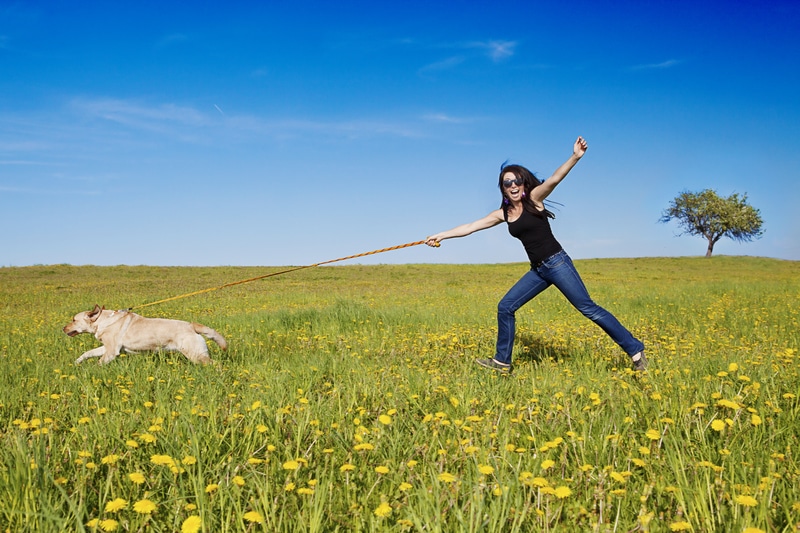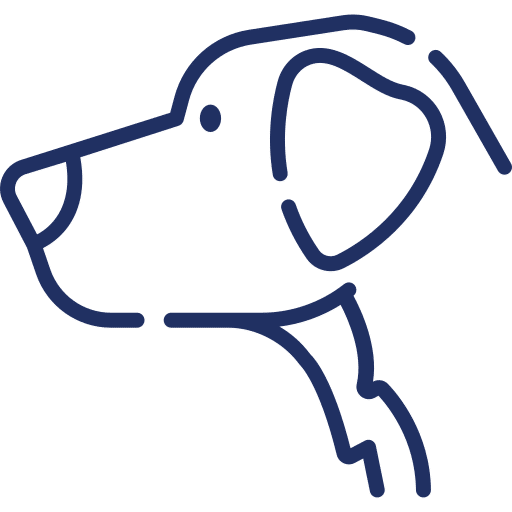

Little Known Tips for Controlling Your Dog Pulling
If your pet continuously pulls on his leash, you should apply some of these tips to control your dog pulling on the leash. It can definitely make your walks smoother. Learn more here.
Walking your dog may be the most interesting experience of his day. It’s understandable that they’d start pushing on the leash to get to their destination quicker. It’s critical to educate children on how to walk gently in order to avoid getting pulled by their pets.
One reason why dogs tug on their leash is that they’ve discovered it’s the only way to go ahead. Dogs desire to interact with their surroundings, and people may be too slow to them. Having a leash on and being tied to a person is not a habit that comes naturally to dogs. When the dog starts to tug on the leash, simply taking one step with them sends a strong message that pulling is effective.
When they sense pressure on their collars, many dogs may instinctively “lean in” and strain forward. Walking on a loose leash is a difficult task that needs patience, preparation, and perseverance.
Learning to walk with a loose leash can take a lot of time, training, and effort. However, it will be well worthwhile when you are out on a nice, peaceful walk with your closest friend.
What’s The Best Way to Get Started?
Every day, all dogs need lots of social, cognitive, and physical stimulation. Regular leash walks may assist with social and mental stimulation, but they seldom meet a dog’s physical exercise requirements. Before training a dog to walk loosely on a leash, make sure the dog’s basic requirements are being fulfilled.
What Equipment Do I Need to Control My Dog Pulling on the Dog Leash?
A simple search on the Internet will show equipment that claims to be able to ‘cure’ pulling. When the dog pulls, certain equipment creates pain or discomfort by placing stress in a sensitive region. This is unneeded, and it may make your pet feel uncomfortable and confused.
Take your dog for a walk with whichever equipment suits them best. If you’re going to use a harness, start slowly and have fun with it.
Leashes
Pick a good leash that is 6-10 feet long and comfortable to hold. It should be broad enough that you won’t get friction burns on your fingers even when the dog pulls, but thin enough that the dog can wear it comfortably. You’ll also need a long line — a leash that’s between 15 and 50 feet long – for uncontrolled but safe exploring. Retractable leashes should be avoided since they may cause severe friction burns in both humans and animals.
Collars
Use a flat, simple collar that is slightly fitted so that you can fit a few fingers between both the collar and the dog’s neck if you select a collar. The collar should be tight enough to prevent the dog from slipping it over his head. A collar is not the appropriate option for your dog if he pulls extremely hard, pulls till he coughs, has loud breathing, or if he can overpower or make you unbalanced when he pulls.
How Do I Get Started with Controlling My Dog Pulling?
Dogs, like every other animal, do what they think is best. They will repeat actions that result in a positive or meaningful outcome (for them). When trying to alter or enhance a dog’s behavior, we must examine what the activity achieves from the dog’s perspective –and how we might adjust that event so that the dog’s behavior improves.
It’s useful to think about why the dog is doing a specific behavior using the ‘ABC’ approach.
- A for Antecedent: What event is happening before your dog pulls on the dog leash?
- B for Behavior: While the action you are concentrating on is the pulling of the leash, there are still other behaviors occurring.
- C for Consequence: What happens during or after it pulls on the leash? This outcome from the perspective of the dog is important to note down.
When you create a training plan, it entails determining A, B, and C, as well as evaluating how the Antecedent and Consequence may be altered to affect behavior. Although each training strategy is tailored to the dog and family, most tugging may be avoided or reversed with a positive reinforcement-based approach.
ABC Technique in Action
Keep in mind that your dog can only see things from his point of view. Although he is forcibly held back, he can glimpse what he desires. From the dog’s perspective, straining towards the direction of the thing he wants may be beneficial. Let’s take a look at the ABCs of tugging toward a different dog.
- A: Your dog notices another dog.
- B: The leash is being pulled by your dog, is wagging his tail, and barking softly.
- C: The distance between you and the other dog is increased towards the other dog.
Pulling is an efficient method for the dog to become closer to what he wants in this scenario. Barking is one method dogs request space or attempt to move another human or animal out of their territory.
Foundation Skills for Prevention of Dog Pulling
Begin in a distraction-free area, such as your house or yard. Bring lots of tiny tasty treats with you, as well as your dog’s favorite toy if your dog likes toys.
Training with a Loose Leash
Put your dog’s leash on and remain still. Wait for a second or so for slack in the dog leash. When the leash is loose, say “Yes!” and immediately give one or two delicious goodies, either in his mouth or near the feet on the ground. Encourage him to consume them by pointing them out to him in a joyful, enthusiastic voice. Repeat this procedure by taking 1-2 steps forward.
- A: You have treats, and the dog is on the leash
- B: The dog remains near enough to you to keep the leash slack.
- C: Delightful delights and heartfelt adoration.
It may be beneficial to employ enticing at first. Luring is the process of enticing a dog to pursue a reward in order to accomplish a certain task. Hold multiple treats in your clenched fist at your dog’s nose level near to your leg. Deliver one reward every 2-3 seconds after your dog’s nose has been attracted to the rewards like a magnet. Begin walking slowly, a few feet at a time, while continuously giving little goodies as long as your pet remains close to you and the leash is slack.
- A: The treats are nearby, and the dog is on the leash
- B: A loose leash is used to follow the reward hand.
- C: Getting a little reward!
Using Cues for Training
Have a phrase or term that will work as a command such as, “Let’s Walk!”, “Walk with me!” or “With Me!” are common options, all of which should be stated in a joyful, enthusiastic voice. Say the cue in a joyful voice after you’ve mastered the sequence of beginning a good walk with a loose leash, at least for a few paces at a time. The signal indicates that incentives are available for walking on a loose leash.
- A: The “Let’s Get Going” command has been heard, and the leash has been attached.
- B: The dog takes some steps with a slack leash (or longer as the dog’s abilities improve).
- C: Getting to progress forward into the environment while staying close to their owner with regular treats in tow.
What Do I Do If the Dog Starts Pulling On the Leash?
- A: The dog is interested in something.
- B: The leash becomes too tight
- C: You stop or walk some steps away from the fascinating item, then look for any signs of a loose leash and treat as described above.
If your dog is unable to ignore the distraction, walk away from it and try again. If all goes properly, it should look like this:
A: The dog is interested in something.
B: You walk with the dog towards the interesting object while the dog leash is still loose.
C: Progress is still made toward the object of interest, and tasty little goodies are given on a regular basis without any dog pulling.
In Conclusion
Training your dog to handle a loose dog leash and not pull on it is easy if you have a proper training program in place. The ABC Technique works really well with dogs since it is based on the reward system instead of the punishment technique.
Discover how to create a joyful, healthy home for your pet.
Subscribe to your weekly rundown of practice, real life ideas and training tips straight to your inbox.


